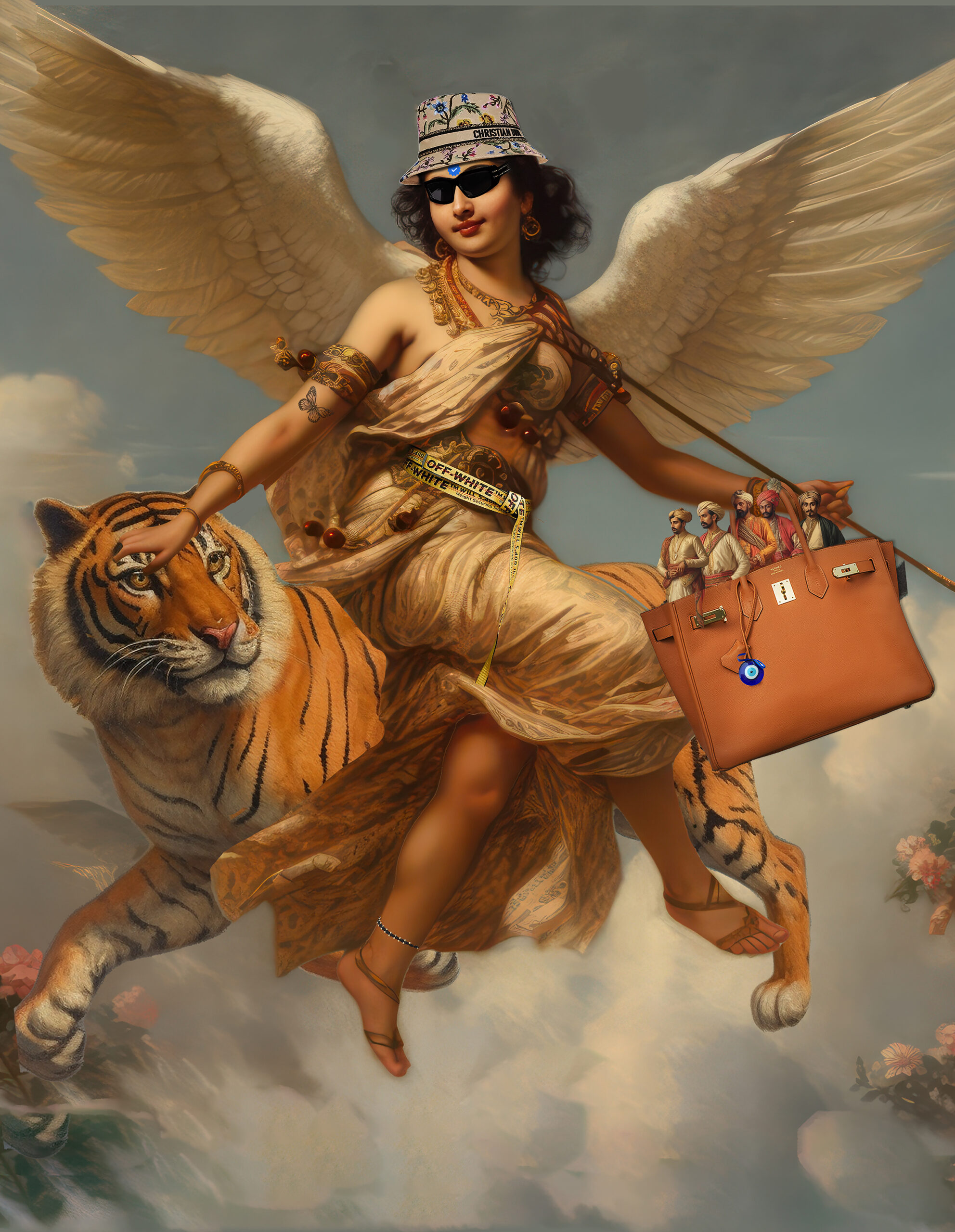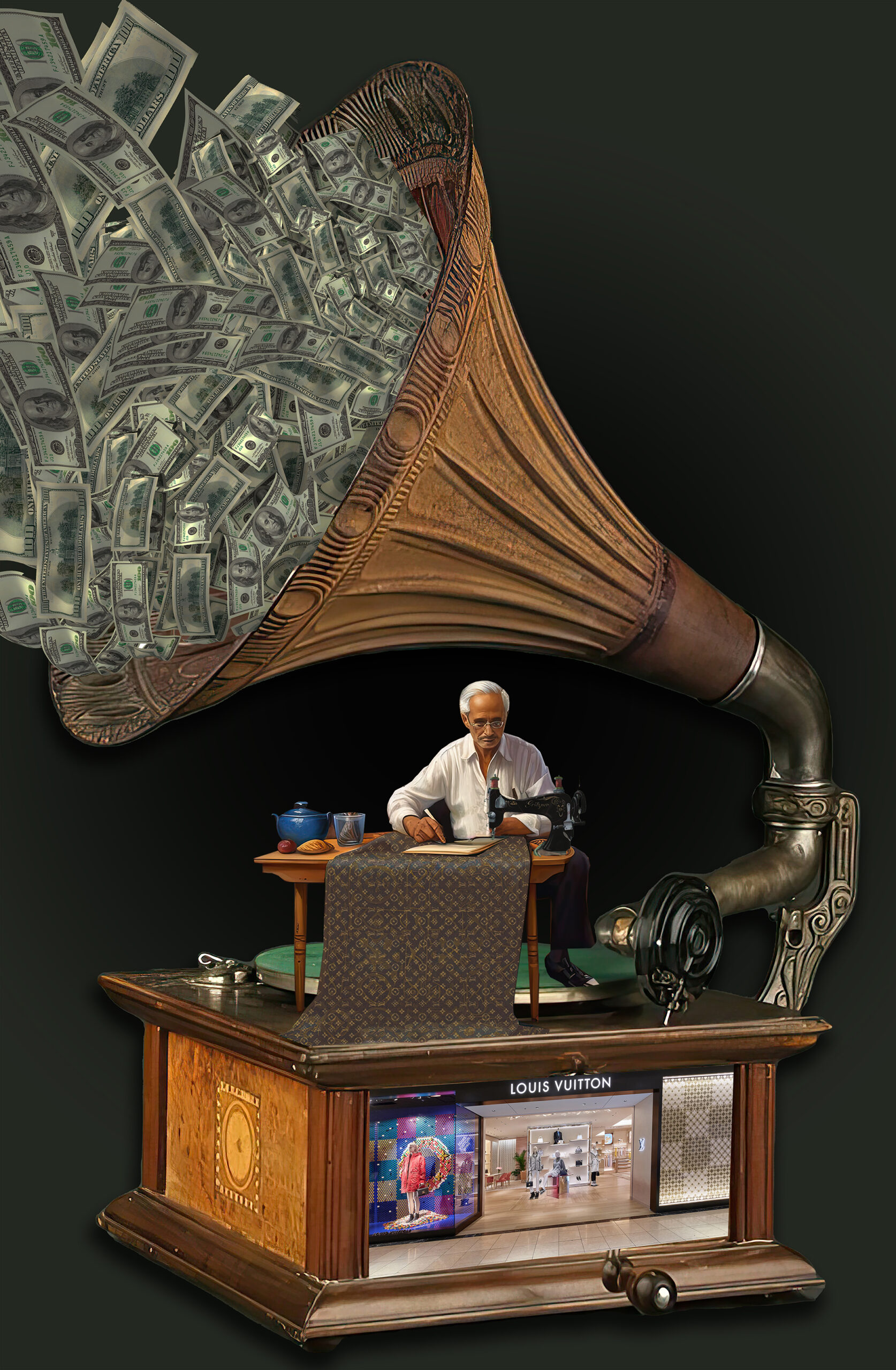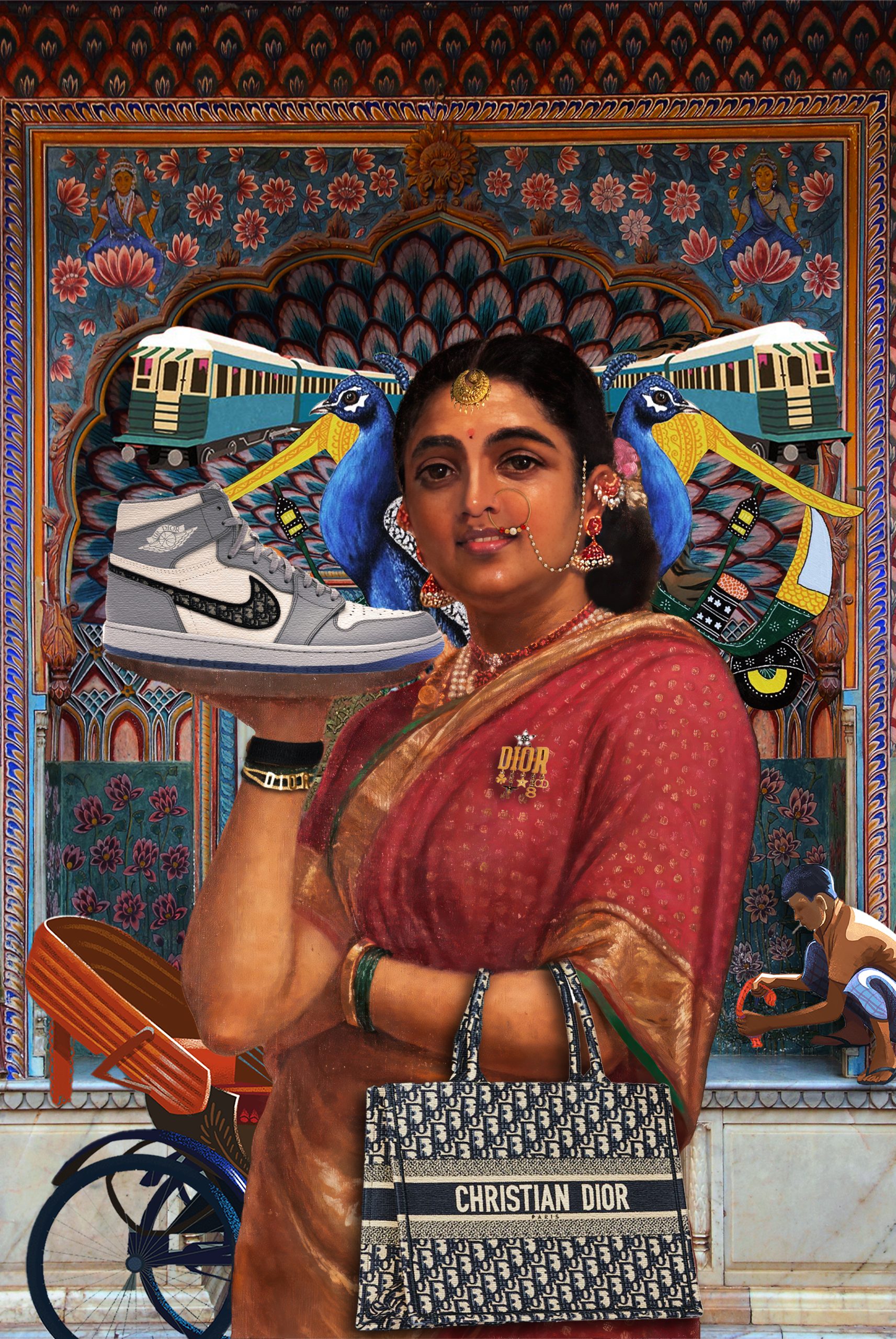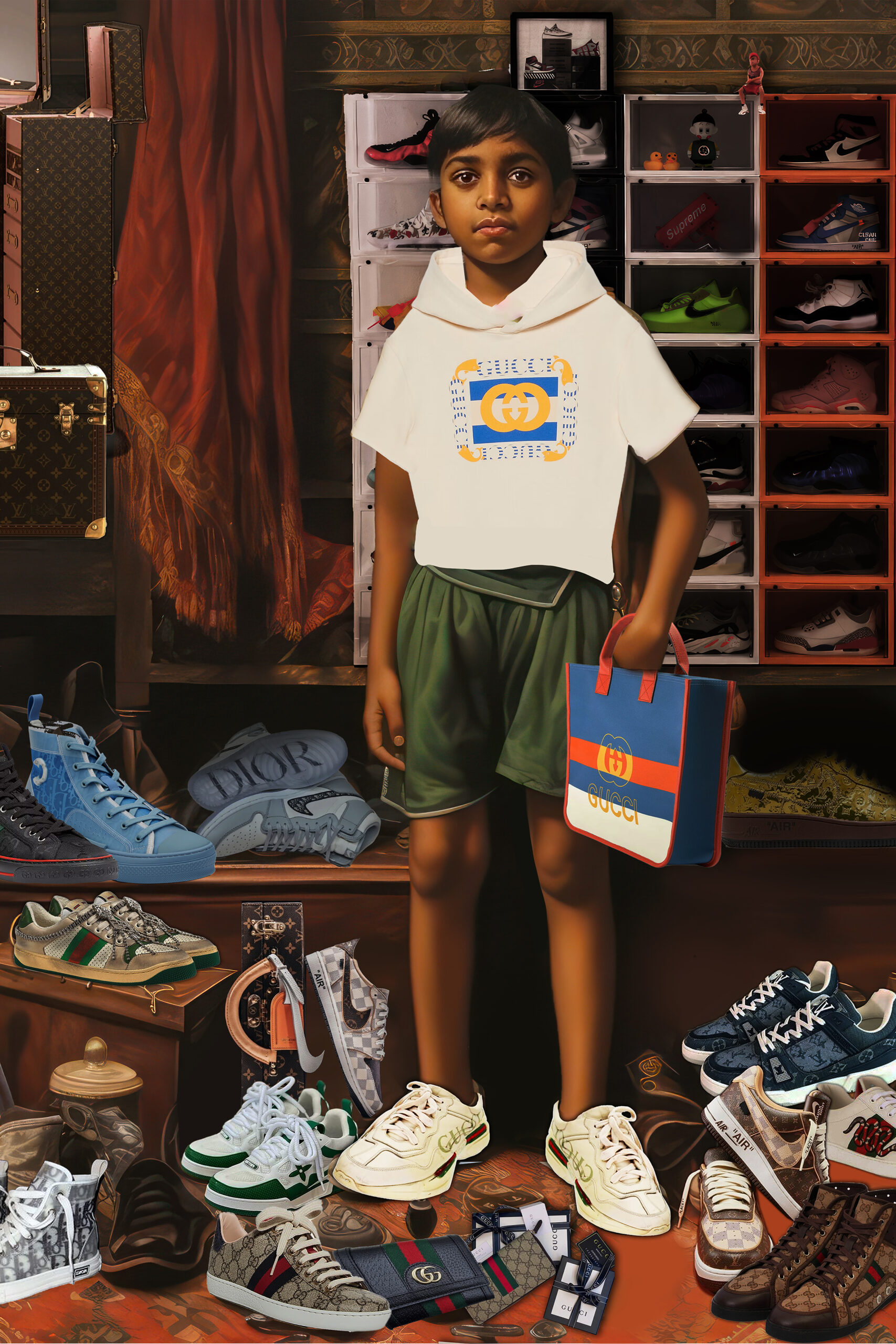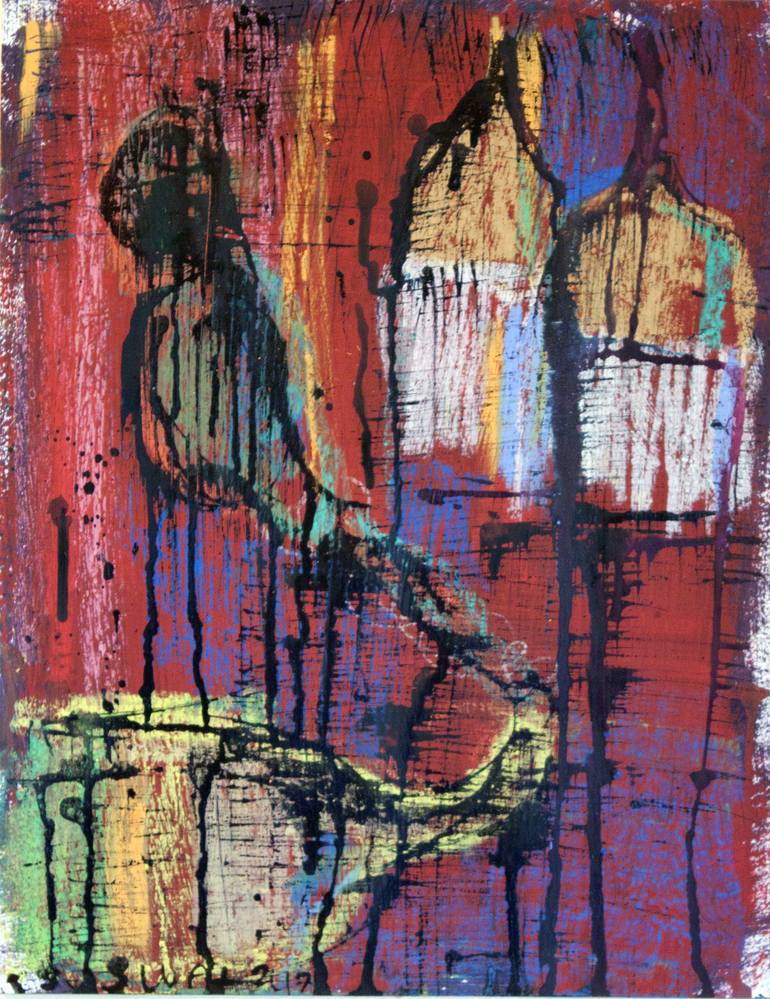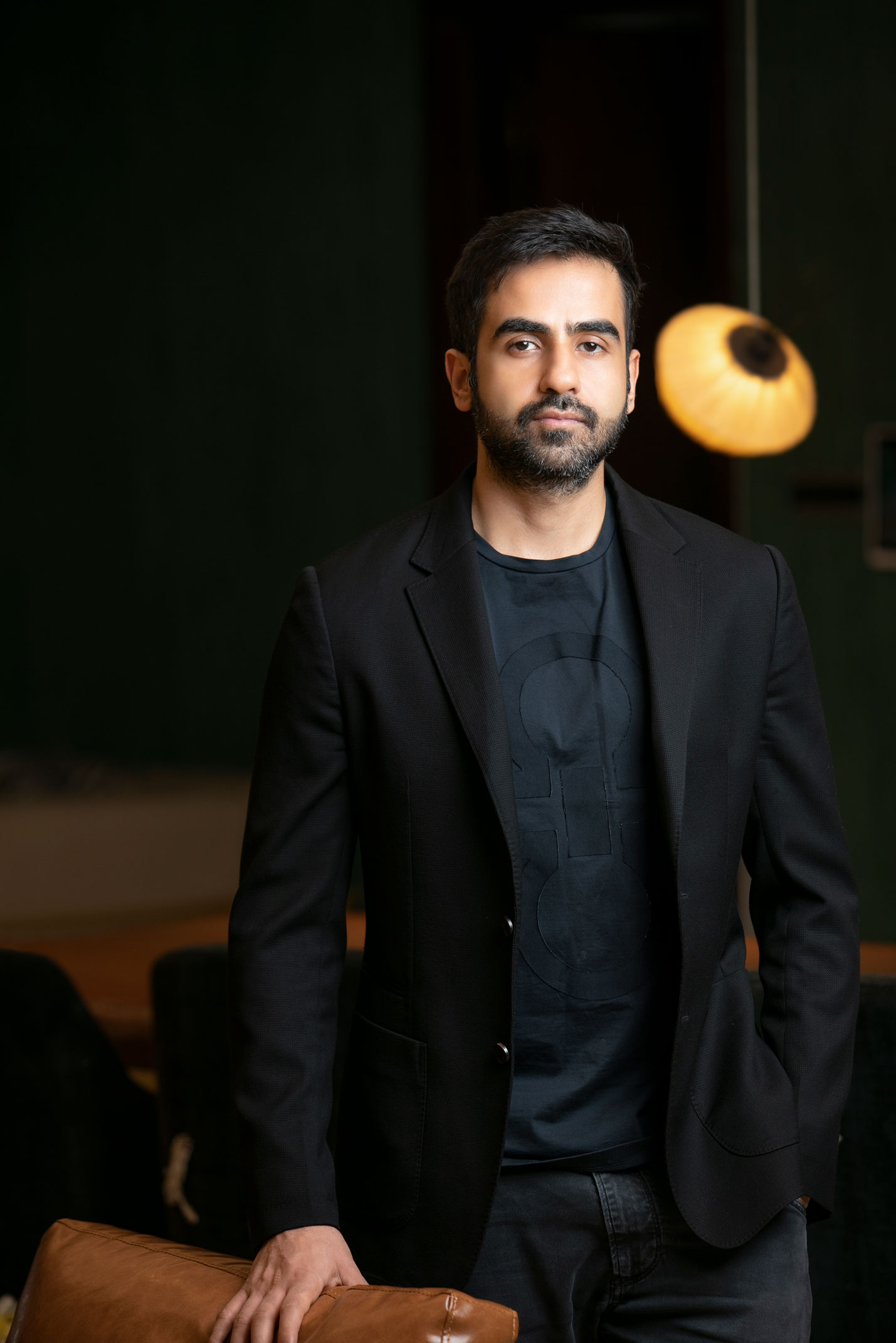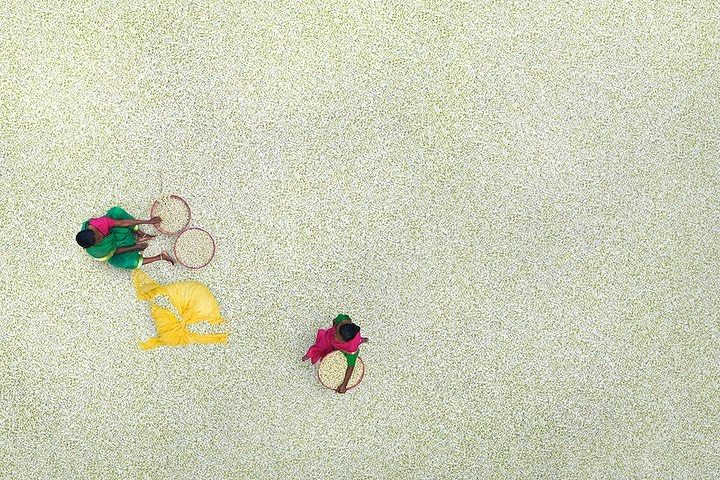Abhay Sehgal, a surrealist-naturalist artist based in Delhi, and I engaged in a captivating dialogue, delving into the intriguing interplay between art and chaos. Our discussion centred on how chaos, in its raw and unstructured form, often serves as a wellspring of inspiration for artistic expression. We explored the dynamic fusion of traditional and contemporary artistic elements, contemplating how these contrasting styles can harmoniously coexist to create captivating and meaningful works of art.
“It depicted a person, but their face was composed of flowers, enveloped in a haze of smoke. That image has stuck with me,” Abhay explained what inspired his foray into surrealist expression; it was the pandemic that led to the beginning of his artistic journey.
The idea behind it was essentially to convey a sense of clarity amidst the chaos. Abhay wanted to express the desire for clarity that people had at such a tumultuous time of the pandemic, to make things loud and clear about everything. The piece was a blend of various elements; the dominant shades of oranges represented the winter Abhay was experiencing through his Boston windows and the lockdown. Each day, he would witness the sunset with its distinct line, which also influenced his colour choices.
(L-R) Untitled; Title: Windows Gaze
“It was created during a time when graduation was moved online, which added another layer of meaning to the piece,” concludes Abhay, reflecting on those experiences.
In his artistic endeavours, he delves into the nuanced aspects of societal dynamics, often drawing parallels to the consumerist tendencies that shape our preferences. He reflects on how individuals, including himself, are drawn to specific trends and products in the market, such as the iPhone, which initially captivates with its allure but later transforms into a ubiquitous monopoly. This observation hints at a deeper narrative about comfort and convenience that can inadvertently lead to the consolidation of power by corporations.
He doesn’t necessarily expect the audience to connect all the dots within his work. He feels that its complexity allows for an open interpretation, inviting viewers to perceive various elements based on their perspectives, which he appreciates. Abhay prefers to keep the interpretation open, believing that the more open the perspective, the more ideas the audience can generate about the artwork’s meaning. He does give a brief about his concepts but only if the person is interested enough to inquire further; otherwise, he enjoys maintaining an open distal perspective.
The use of recognisable brands in his art serves a dual purpose. On one hand, it adds a relatability factor, making the art accessible to those who might not typically understand or appreciate traditional art. On the other hand, it also adds depth for those more familiar with art, as they can appreciate the additional layer of commentary on consumer culture and the commodification of art.
(L-R) Untitled; Title: Add to Cart
Abhay’s intentions to create pieces titled “Madness” and “Chaos,” was to create compositions that appear chaotic at first glance but reveal a sense of order upon closer inspection. The idea was to portray the concept that within chaos, there is also a form of order or meaning. Each element in these pieces was deliberately chosen to contribute to this overall effect.
In terms of the blend of old and modern elements in his artwork, he sees it as a reflection of his effort to make historical and traditional themes relevant to contemporary audiences. He believes there is a significant gap between what is taught about history and how it relates to modern life. By blending these elements, he aims to prompt viewers to consider how the past and present intersect and how conversations between different eras might occur.
Abhay’s work also touches upon the essence of personal experiences and feelings within various scenarios, akin to the approach taken by Haruki Murakami in his surrealist wordscape. For instance, his piece “Add to Cart” explores the relationship between consumers and brands, offering a philosophical perspective on how individuals interact with and perceive these entities.
In viewing Abhay’s art from a third-person perspective, one can appreciate the philosophical depth it embodies, inviting contemplation on societal structures and personal interactions with the world around us.
Words by Esha Aphale.
Image courtesy Abhay Sehgal.
